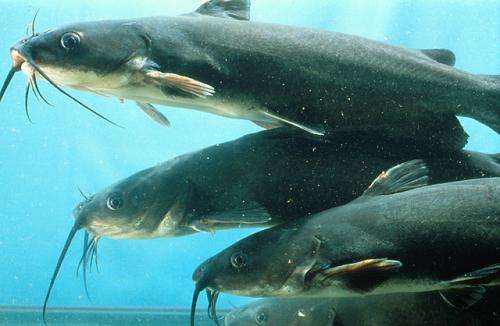Catfish industry embraces USDA pond management research

The aquaculture industry is taking notice of U.S. Department of Agriculture (USDA) research that gives the precise levels of dissolved oxygen needed to keep pond-raised catfish alive and growing.
Traditionally, fish farmers relied on daily observations to determine if fish were getting enough oxygen. If farmers saw fish sucking air at the water surface, they turned on aeration equipment. If no fish were seen, it was assumed that enough oxygen was being provided.
Les Torrans, a fish biologist in the Agricultural Research Service (ARS) Warmwater Aquaculture Research Unit in Stoneville, Miss., pinpointed the dissolved oxygen concentrations needed to keep fish alive and growing. ARS is USDA's principal intramural scientific research agency.
Dissolved oxygen is the most critical water quality factor in aquaculture. If oxygen gets too low, fish can die or become partially asphyxiated. Lack of air causes fish to lose their appetite. When they eat less, they do not grow as quickly. As a result, instead of fish reaching market size in two years, it may take four to five years.
Torrans, together with his ARS and Mississippi State University colleagues at the Thad Cochran National Warmwater Aquaculture Center in Stoneville, studied the effects of dissolved oxygen concentration on catfish growth, yield, food consumption and feed conversion.
An oxygen monitoring system was used to maintain precise minimum dissolved oxygen setpoints—3.0, 2.0 and 1.5 parts per million (ppm). Results showed that the minimum dissolved oxygen concentration for optimum production is 2.5 to 3.0 ppm. At this level, catfish growth significantly improved, fewer fish died, feed conversion improved and the production cycle was shorter.
Farmers who use good oxygen management practices can double the growth rate of fish, according to Torrans. The exact amount of aeration needed to maximize fish food intake, growth and production is now available.
More information: Read more about this research in the November/December 2013 issue of Agricultural Research magazine.
Provided by Agricultural Research Service
















